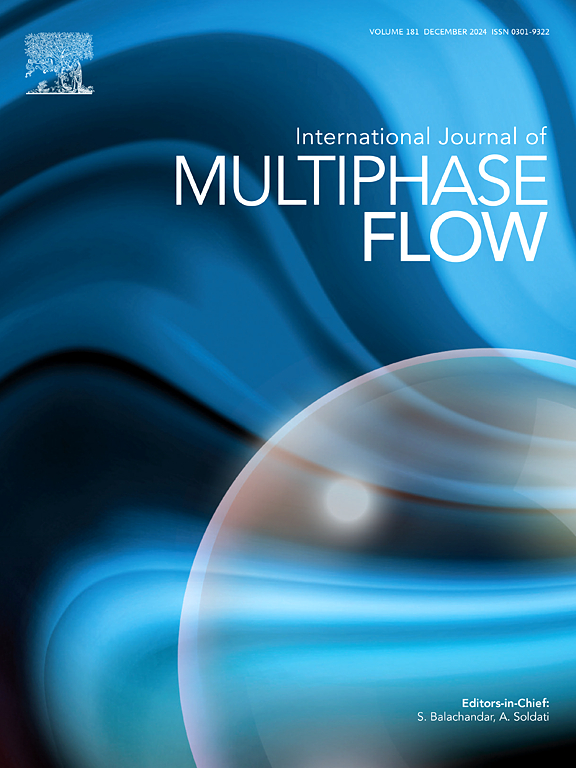A physics-inspired neural network to model higher order hydrodynamic interactions in heterogeneous suspensions
IF 3.6
2区 工程技术
Q1 MECHANICS
International Journal of Multiphase Flow
Pub Date : 2025-01-08
DOI:10.1016/j.ijmultiphaseflow.2025.105131
引用次数: 0
Abstract
We propose a novel physics-inspired, data-driven framework for modeling particle-laden flows that conceptually overcomes the limitations of conventional methods. By building on the hierarchical model of Siddani and Balachandar (Siddani and Balachandar, 2023), our framework incorporates global and local heterogeneities and integrates higher-order interactions. We leverage machine learning, to first sequentially train neural networks to predict isolated -order interactions for -body systems. We then feed the information obtained from binary , ternary and quaternary interactions to a suspension neural network, with an architecture featuring distinct, shared blocks for each interaction order and linear activation to integrate interactions of varying orders. Our findings demonstrate significant promise in capturing the hydrodynamic disturbances within suspensions of homogeneous and stepwise heterogeneous test cases. Specifically, our study indicates that the reformulated Quaternary Hierarchical Model (QHM), which incorporates four hierarchical structures (based on unary, binary, ternary, and quaternary interactions), provides promising results in predicting the forces and torques experienced by a reference particle. By varying the number of neighboring particles and interaction orders, the QHM consistently outperforms the Binary and Ternary Hierarchical Models, achieving testing values of 0.738, 0.752, and 0.829 for streamwise drag force , transverse lift force and transverse torque , respectively. Optimizing both the number of neighbors and interaction order is crucial for maximizing the model performance, especially for predicting . To predict and , the interaction order with neighboring particles significantly affects performance, with higher-order interactions proving more critical than the number of neighbors. Our results support the generalizability and universality of all proposed model architectures with minimal variation in performance between training and testing across all datasets, as well as for each individual subset.

求助全文
约1分钟内获得全文
求助全文
来源期刊
CiteScore
7.30
自引率
10.50%
发文量
244
审稿时长
4 months
期刊介绍:
The International Journal of Multiphase Flow publishes analytical, numerical and experimental articles of lasting interest. The scope of the journal includes all aspects of mass, momentum and energy exchange phenomena among different phases such as occur in disperse flows, gas–liquid and liquid–liquid flows, flows in porous media, boiling, granular flows and others.
The journal publishes full papers, brief communications and conference announcements.

 求助内容:
求助内容: 应助结果提醒方式:
应助结果提醒方式:


